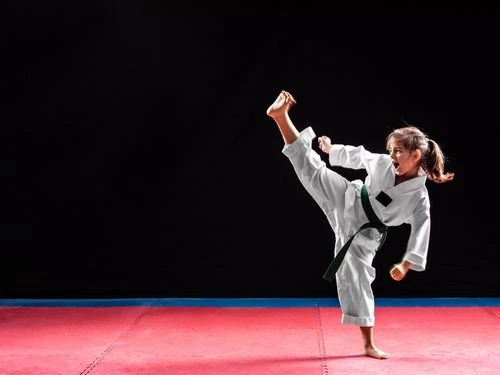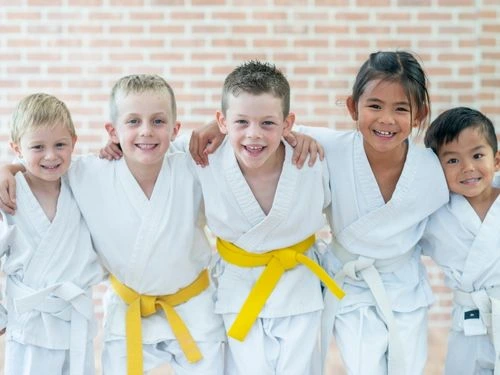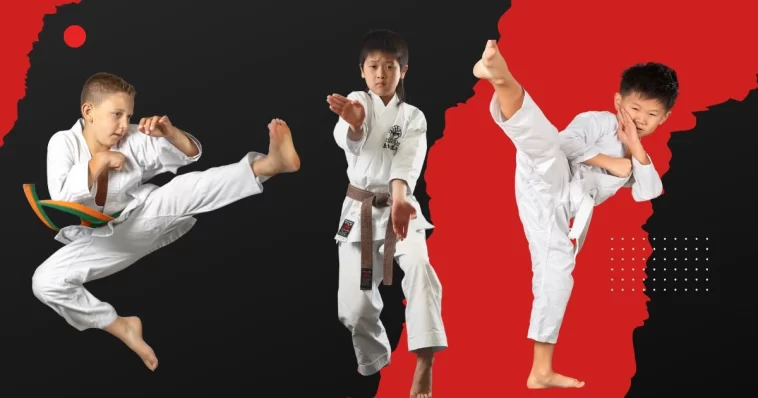Martial arts can be a fantastic way for children to develop discipline, confidence, and physical fitness. But with so many options available, parents often wonder which martial art is best for beginners. Some martial arts emphasize physical strength, while others emphasize mental focus, flexibility, or self-defense. Choosing the right style can set the tone for a child’s lifelong interest in fitness and personal growth.
This guide explores the best beginner-friendly martial arts for kids, offering detailed insights into each style’s unique features, benefits, and whether it is the right fit for your child.
Why Martial Arts Are Great for Kids
Martial arts offer more than just learning how to kick or punch. For children, they provide a structured environment that emphasizes discipline, respect, and perseverance. Practicing martial arts can also improve coordination, flexibility, balance, and cardiovascular health. Many children also gain essential social skills, such as teamwork, leadership, and empathy, as they interact with peers and instructors in class.

Additionally, martial arts can build self-confidence. Learning new techniques and achieving belt rankings gives kids a tangible sense of accomplishment. They know that progress comes with patience and consistent effort, lessons that extend far beyond the dojo or training hall.
Key Considerations for Choosing a Martial Art
Before diving into specific martial arts, parents should consider a few key factors to help guide their decision:
- Child’s Age and Physical Development: Some martial arts, like judo or Brazilian jiu-jitsu, involve a lot of physical grappling, which may be better suited for slightly older children who have more control over their bodies. Others, like taekwondo or karate, may be suitable for younger children as they emphasize kicking, striking, and basic coordination.
- Personality and Interests: Kids with high energy levels may enjoy the fast-paced nature of taekwondo or kickboxing. More reflective children may prefer martial arts focused on discipline and technique, such as aikido.
- Goals: Are you looking for your child to develop self-defense skills, improve fitness, or have fun? Understanding your goals can help determine which martial art aligns best with them.
- Safety: Beginners should start with a martial art that emphasizes safety and proper technique. Look for programs with qualified instructors, child-specific classes, and a clear focus on injury prevention.
With these considerations in mind, let’s explore some of the best beginner-friendly martial arts for kids.
I am running a few minutes late; my previous meeting is running over.
Best Beginner-Friendly Martial Arts for Kids to Thrive
1. Karate
Karate is one of the most well-known martial arts worldwide and is often recommended for beginners. It originated in Okinawa, Japan, and emphasizes striking techniques, including punches, kicks, and knee strikes. Karate classes for children typically combine physical training with lessons in respect, self-discipline, and mental focus.
Benefits of Karate for Kids:
- Improves balance, coordination, and flexibility.
- Builds strength and endurance through repetitive practice and drills.
- Teaches self-discipline, respect for others, and goal-setting through belt rankings.
- Provides basic self-defense skills suitable for everyday situations.
What a Karate Class Looks Like:
A typical beginner class starts with warm-up exercises such as stretching, jumping jacks, or running drills. Children then learn basic punches and kicks, followed by practice routines called katas. These katas are sequences of movements that teach proper form, timing, and focus. Classes often end with a brief cool-down and a reflection on the values taught during the lesson.
Example: A six-year-old attending a beginner karate class might start with learning a simple front kick and a basic punch combination. By practicing these movements daily, the child gains confidence in both their physical abilities and mental focus.
2. Taekwondo
Taekwondo is a Korean martial art recognized for its dynamic kicking techniques and fast-paced movements. It is beginner-friendly and widely taught to children as young as four. One of the key appeals of taekwondo for kids is its energetic approach, which makes physical activity fun while teaching valuable skills.
Benefits of Taekwondo for Kids:
- Enhances flexibility, agility, and cardiovascular fitness.
- Improves focus, patience, and discipline.
- Encourages goal-setting through belt advancements and achievements.
- Introduces practical self-defense techniques in a controlled environment.
What a Taekwondo Class Looks Like:
Classes often begin with stretching and warm-up exercises, followed by practicing kicking techniques, blocks, and punches. In addition to individual skills, children may engage in partner drills to develop coordination and timing. Games and challenges are often incorporated to keep younger kids engaged.
Example: A seven-year-old might learn a roundhouse kick during their first month of classes. As the child progresses, they might practice jumping or spinning kicks while maintaining balance, combining fun and skill development.
3. Judo
Judo is a Japanese martial art that emphasizes throws, holds, and grappling rather than striking. It is particularly suited for beginners because it emphasizes control, leverage, and proper technique rather than raw strength. Judo is also highly effective for teaching respect and discipline.
Benefits of Judo for Kids:
- Teaches balance, coordination, and spatial awareness.
- Improves strength, flexibility, and endurance through safe throws and groundwork.
- Encourages problem-solving as children learn to respond to an opponent’s movements.
- Promotes respect, discipline, and good sportsmanship.
What a Judo Class Looks Like:
Beginners start by learning how to fall safely, which is crucial for injury prevention. Children then practice basic throws, rolls, and pins with a partner. Classes are often highly structured and include games and exercises to reinforce technique and teamwork.
Example: A nine-year-old may begin by practicing basic breakfalls to ensure they can fall safely. As confidence grows, the child learns simple throws such as the hip throw, building strength and awareness without risking injury.
4. Brazilian Jiu-Jitsu
Brazilian jiu-jitsu, or BJJ, is a martial art centered on ground techniques, including joint locks and chokeholds. It is especially suitable for beginners because it allows children to develop strength and strategy while emphasizing technique over brute force. BJJ is also known for building confidence in self-defense situations.
Benefits of BJJ for Kids:
- Develops problem-solving skills through grappling and positional strategies.
- Improves physical fitness, flexibility, and core strength.
- Encourages teamwork and cooperation in partner exercises.
- Boosts confidence by teaching effective self-defense techniques.
What a BJJ Class Looks Like:
A typical class begins with warm-up exercises such as shrimping, rolling, or agility drills. Children then practice techniques like guard positions, escapes, and submissions under the supervision of a qualified instructor. Rolling or sparring is usually introduced gradually, ensuring safety while allowing children to apply what they have learned.
Example: A ten-year-old new to BJJ might learn how to escape from a mount position. Practicing this technique with a partner builds confidence, strength, and critical thinking skills while prioritizing safety.
5. Aikido
Aikido is a Japanese martial art that emphasizes harmony, control, and redirection of an opponent’s energy. Unlike many striking-focused martial arts, aikido encourages children to use balance and technique rather than force. It is excellent for children who prefer a calmer, more structured environment.
Benefits of Aikido for Kids:
- Teaches coordination, balance, and awareness of body movement.
- Encourages conflict resolution without aggression.
- Develops focus, patience, and discipline through repetitive practice.
- Provides practical self-defense techniques that don’t rely on strength.
What an Aikido Class Looks Like:
Classes often begin with warm-ups, followed by practicing rolls, falls, and basic techniques with a partner. Children learn to blend with an opponent’s movements rather than resisting, making aikido ideal for those who may be less physically assertive. Classes also often incorporate mindfulness exercises to enhance concentration and calmness.
Example: A child may learn how to redirect a partner’s push using a wrist lock or guiding movement. This teaches problem-solving, balance, and control, offering a sense of accomplishment and confidence.
6. Kung Fu
Kung fu, a Chinese martial art, is known for its flowing movements, kicks, and traditional forms. Many kung fu schools offer beginner programs for children, emphasizing agility, flexibility, and rhythm. Kung fu is not only a physical discipline but also incorporates philosophy and cultural lessons.
Benefits of Kung Fu for Kids:
- Enhances strength, flexibility, and coordination through dynamic movements.
- Builds self-discipline and focus while learning traditional forms.
- Encourages creativity and self-expression through movement and forms.
- Introduces cultural appreciation and mindfulness through the philosophy of martial arts.
What a Kung Fu Class Looks Like:
Children begin with warm-up exercises and basic stances, punches, and kicks. Forms or “katas” are taught to help children learn patterns of movement while developing focus and memory. Partner drills and light sparring may be included to practice timing and technique in a safe environment.

Example: A child may start by practicing the horse stance for leg strength and stability. Over time, they may progress to performing forms that combine kicks, punches, and balance techniques, cultivating both physical skill and concentration.
Tips for Introducing Kids to Martial Arts
- Start Slow: Beginners need to ease into martial arts. Short, age-appropriate classes are better than pushing a child into long, intense sessions.
- Focus on Fun: Especially for younger children, the primary goal should be enjoying movement and play. Martial arts that incorporate games, challenges, and interactive exercises can keep kids engaged.
- Look for Qualified Instructors: A skilled and experienced instructor is crucial for safety and learning. Seek instructors who specialize in teaching children and maintain a positive, encouraging environment.
- Encourage Progress, Not Perfection: Martial arts are about consistent improvement. Celebrate small milestones, like mastering a kick or completing a form, to foster confidence.
- Observe and Adjust: Every child is different. If a child struggles with a particular martial art, consider trying another style that better suits their personality and physical abilities.
Choosing a Martial Art That Empowers Your Child
Choosing the right beginner-friendly martial art for kids depends on their age, personality, and goals. Energetic children may enjoy karate or taekwondo, while those who prefer strategy might thrive in judo or Brazilian jiu-jitsu. Aikido emphasizes harmony and control, and kung fu encourages creativity and cultural learning. The key is ensuring your child enjoys the experience, as martial arts build fitness, confidence, discipline, and social skills. Starting with a suitable style fosters both skill and character, offering a lifelong foundation of physical and mental growth.



